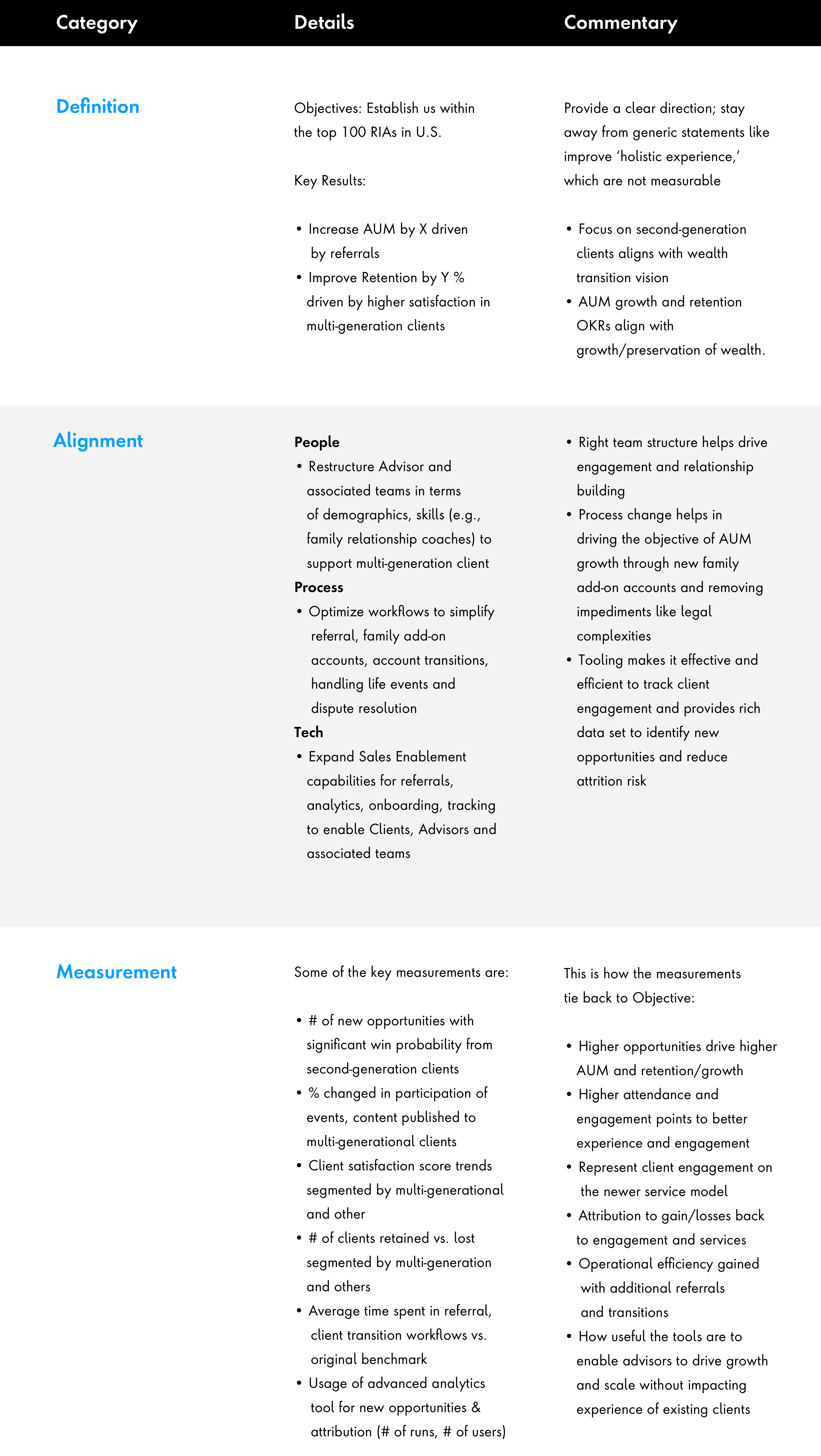What issue can we solve for you?
Type in your prompt above or try one of these suggestions
Suggested Prompt



Using the DAM (Define, Align, Measure) Approach in Financial Services to Unlock Business Value
F1 enthusiasts may be familiar with Michael Schumacher, who won seven World Drivers' Championship titles, including five consecutive titles from 2000 to 2005. At his time, he held several other records, including 91 wins, 68 pole positions and 155 podium finishes. Of course, a lot of this success was attributed to his driving skills; however, he and his team’s ability to utilize every possible aspect of efficiency and performance from the vehicle, crew and equipment, as well as their understanding of the tracks, the competition and external factors like weather and resistance, also contributed significantly to their success.
Most organizations are great at establishing a vision, defining high-level, subjective goals (i.e., “grow our wealth management business”), and often jump into execution straight away by buying or building a platform. Some of them succeed, as they are first to the market, have smart employees or by sheer luck. However, more often than not, organizations are not successful, as they struggle to identify what went wrong and how they can improve.
Now let’s switch over to pressing enterprise initiatives. How are the digital business transformation initiatives driving success in financial services?
- Has the value been identified for what needs to be realized? Are there clear objectives and key results associated with what is being built?
- Do all key stakeholders and teams have similar understandings of approach and direction to accomplish objectives? Do the tech initiatives and priorities align to drive the results?
- While the objectives and value metrics are there, is it known how quickly (speed) and how well (quality) a team is progressing toward those objectives? And, more importantly, is progress being measured using data incrementally?
“Definition, Alignment, Measurement” (DAM) is an agile, feedback-driven and comprehensive method of Business Value Realization and learning which can set teams up for long-term success.

DAM in practice
Looking at this with an example of a wealth business (a registered investment advisor serving high-net-worth/ultra-high-net-worth individuals or HNW/UHNW), with a vision of "providing holistic financial advice to multi-generational HNW clients for seamless wealth transition and wealth preservation.” By applying the DAM approach on how to drive to towards this vision without trying to do it all, it’s important to define objectives that tie directly back to the vision:
DAM in action
Conclusion
Financial organizations often embark on a large digital transformation to establish, grow or retain. Before spending tons of money on technology or processes, it is critical to step back and apply the “DAM” framework. This will help drive toward clear business objectives, apply a holistic approach across people, processes and tech and measure progress to drive scalable and sustainable transformation.
Related Reading
-
![]()
Five Asset Management Trends for 2023
During a period of continual economic uncertainty, asset managers have to find ways to evolve and shift priorities to maximize growth and build resiliency.
-
![]()
3 Ways to Build a Valuable Relationship With Your New Digital Partner
A valuable outcome is often a reflection of the strength of the partnership between a client and their digital partner.
-
![]()
Just 3 Things: The Shift to Product Mindset Over Project Mindset
While both project and product may be designed to create value for both the business and its customer, there is a difference.









